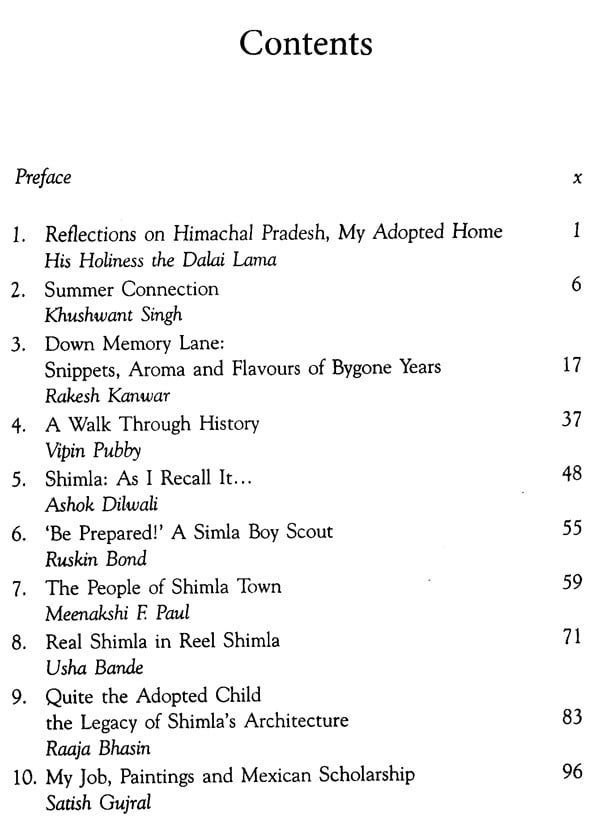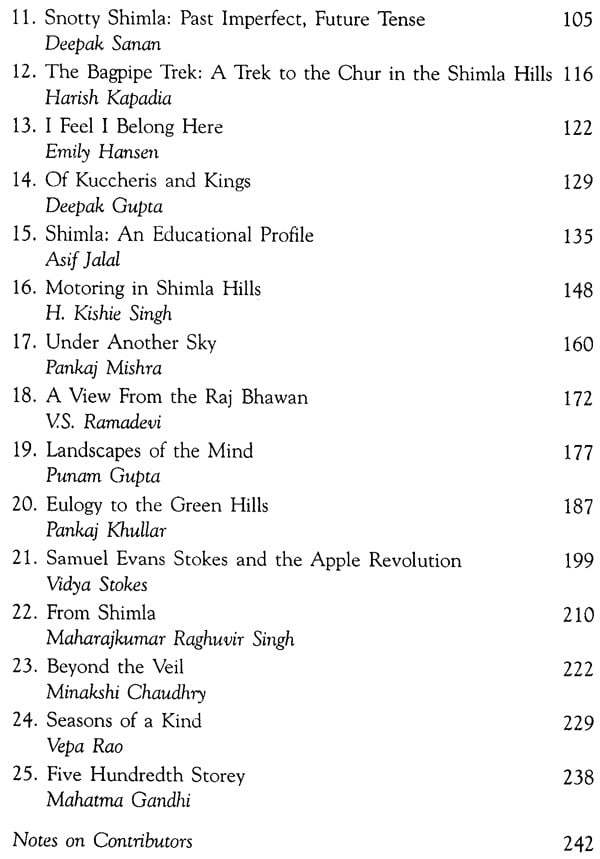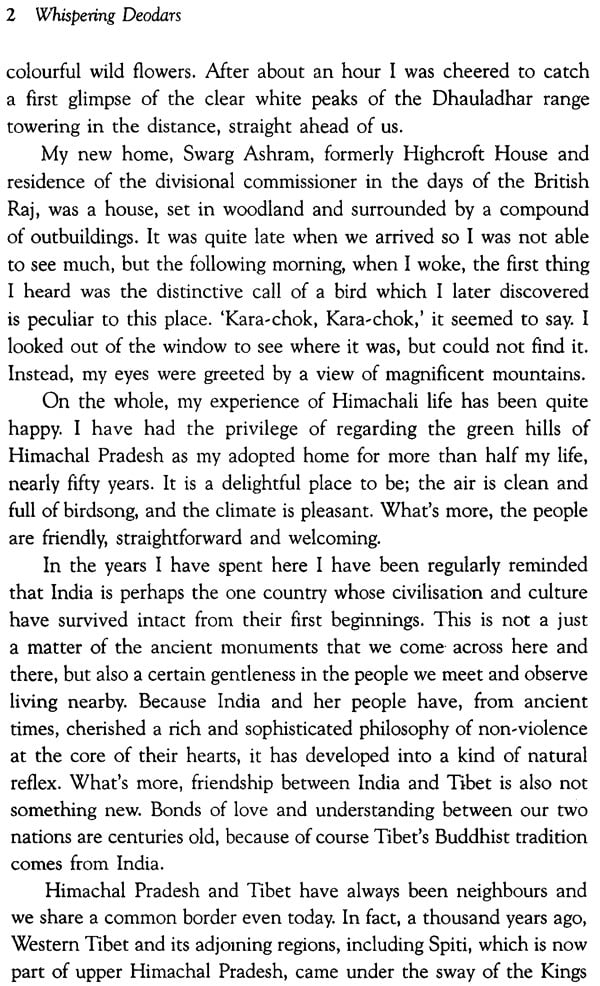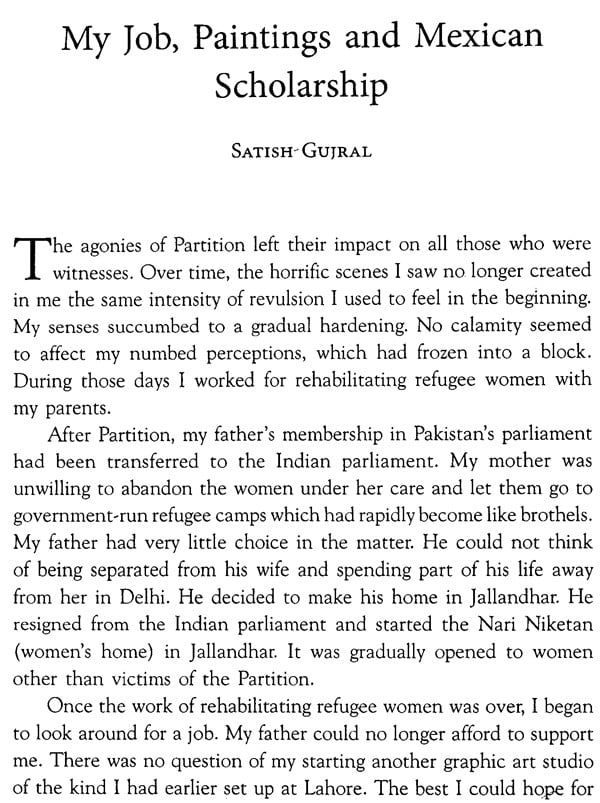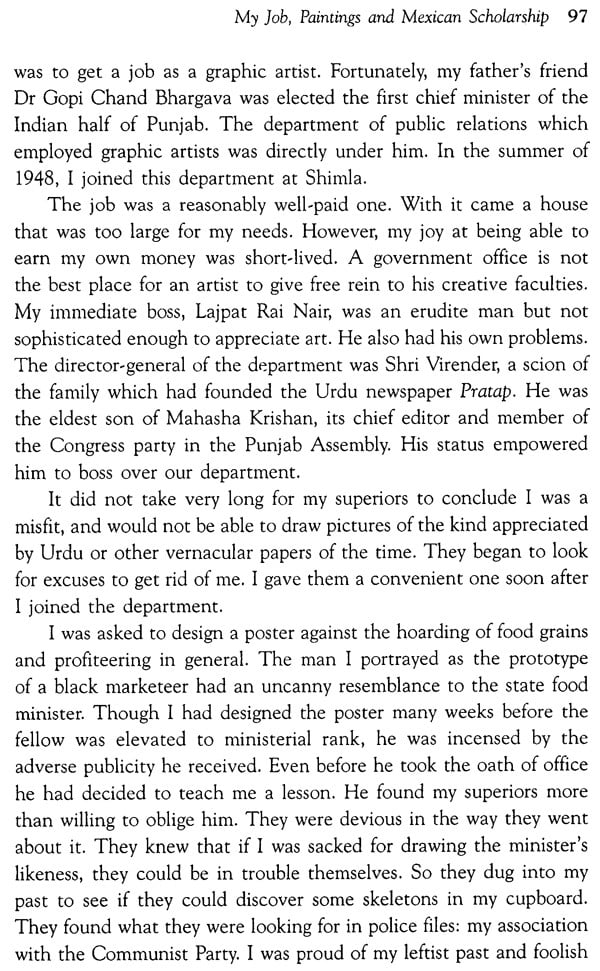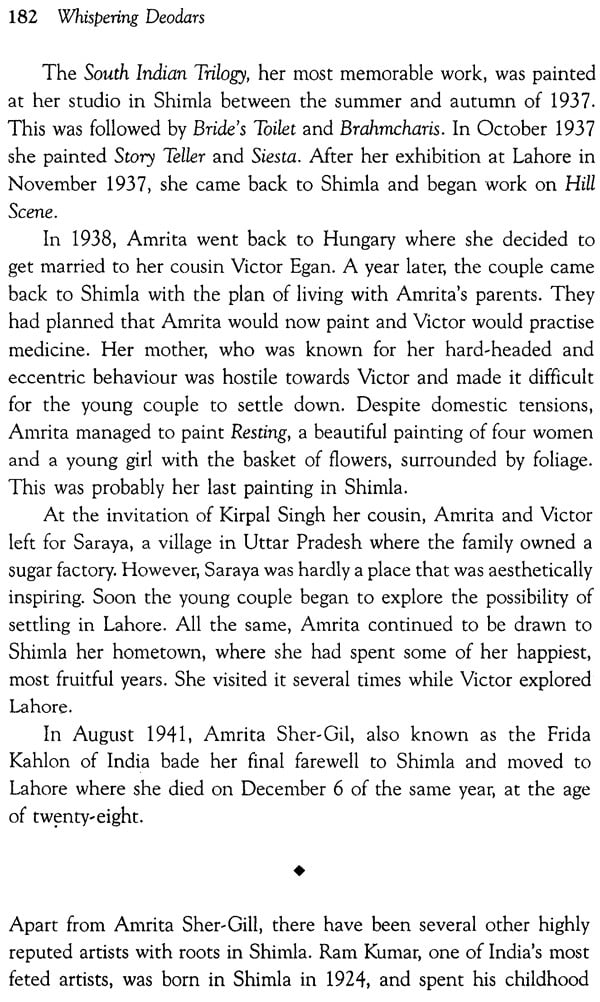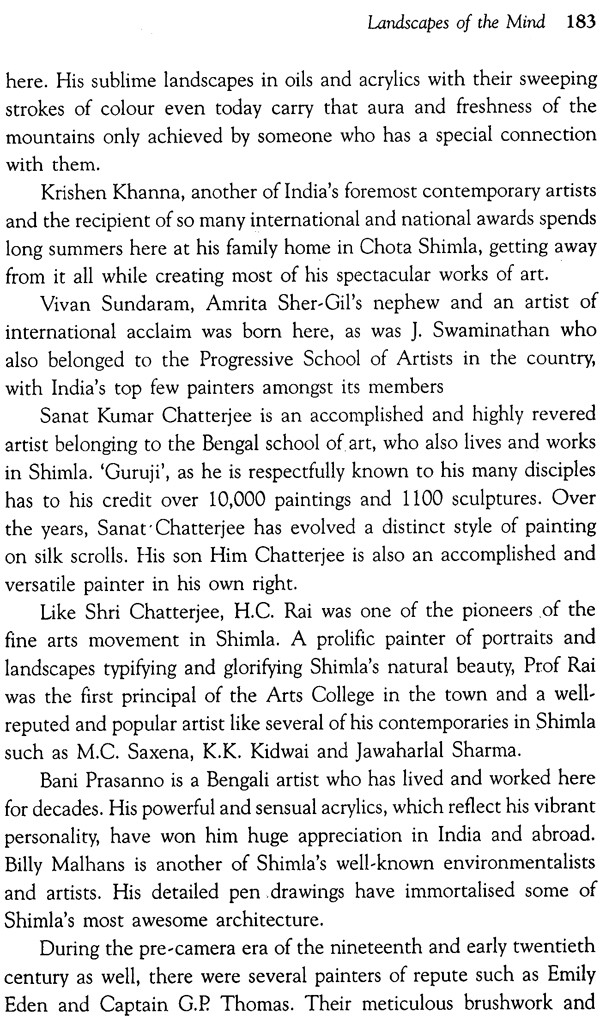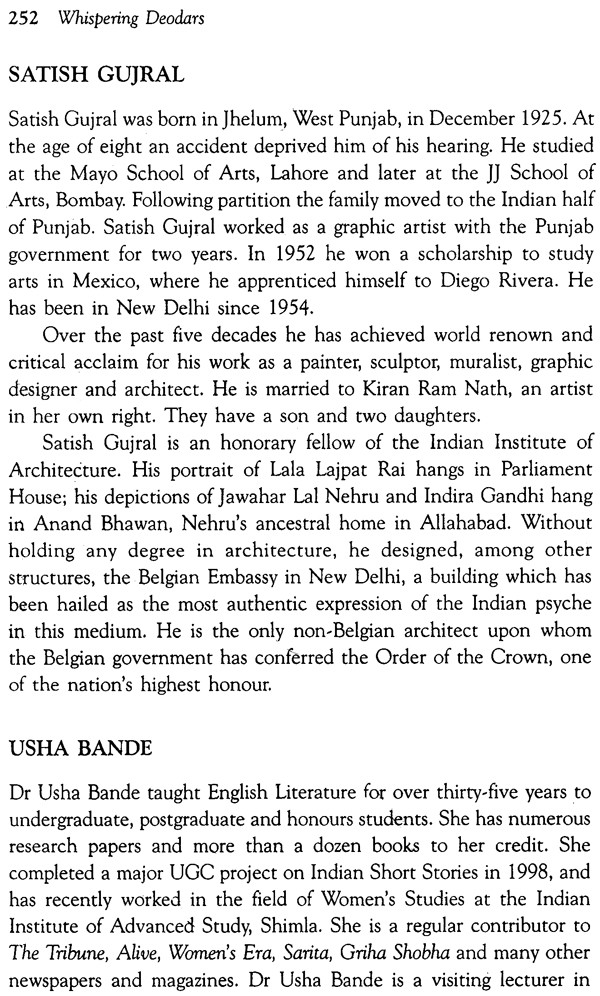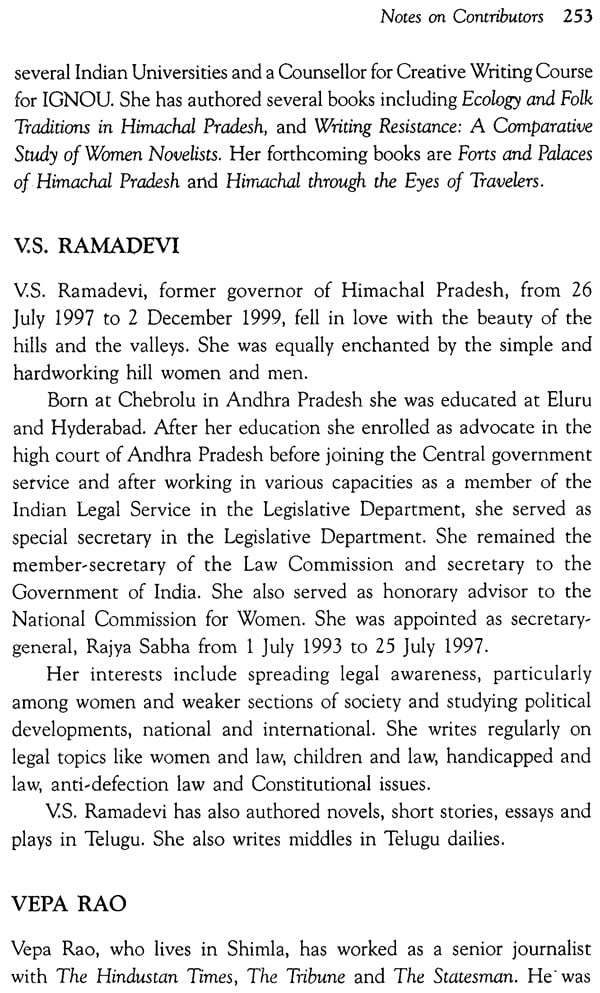
Whispering Deodars (Writings From Shimla Hills)
Book Specification
| Item Code: | NBZ662 |
| Author: | Minakshi Chaudhury |
| Publisher: | Rupa Publication Pvt. Ltd. |
| Language: | English |
| Edition: | 2009 |
| ISBN: | 9788129113184 |
| Pages: | 266 (16 B/W ILLUSTRATIONS) |
| Cover: | HARDCOVER |
| Other Details | 9.00 X 6.00 inch |
| Weight | 440 gm |
Book Description
This anthology comprises articles written by many interesting people who share a past with Shimla: either as residents, students, or professionals. The articles cover a range of things about the place including the suburbs around Shimla. There are personal stories as well as objective ones to give a wholesome picture of this special region.
The story of the rise of 'Simla, a middling sized village where a faquir is stationed to give water to the visitors' and the surrounding hills into prominence defies logic but that is the way history weaves its magic. Even then let us give some flight to our fancies and ponder over some silly questions as historians would call these.
What if the Gerard brothers has taken a different route and never reached this hill abode? What if the Gurkhas had not subjugated the hill states with the ruthlessness with which they did? What if the hill chiefs had not invited the British to deliver them from the tyrannies of the Gurkhas? What if the desire to locate a viable route to Tibet had taken a different turn? What if Captain Charles Pratt Kennedy had chosen a different place to build his house? What if...? But the deal was clinched in favour of these hills. There are very few hill stations in India which have such a rich historical past, strategic location, salubrious climate and plentitude of architectural splendor.
For me the heart of Shimla town is warm and delightful with the freshness and effervescence of a child, laughter echoing all around. It is the cockpit of Shimla hills.
Life in Shimla hills has a rhythm of its own. It dances to its soft and laid back melody of poignant lyrics symbolising the beauty of nature and its relationship with man made things.
This anthology is not just a collection of articles but a tale flowing through time and space...a story that beats with the hearts of people relating their experiences.
One main reason for the British to have taken fancy for Shimla hills was the climate and environment. Cooler temperatures compared to burning and humid summer months in the plains of India, mist filled monsoons and snowy winters reminded them of home. Clean mountain air, deep glens, thick conifers, all combined to create the magic of the English weather and made them nostalgic about their homeland.
For them, these hills were a place to rest, relax and enjoy the fun, frolic and festivities. Though for Indians it was a different story altogether who had to brave 'the three and half month long monsoon, it’s hard to digest mineral water, the panting uphill and break neck down walks, since most Indians could not afford either horse or Rickshaw.' A place which was home to the British but was a symbol of exploitative imperial government for the Indians, as Mahatma Gandhi described, `the distance equal to the height of 500 floors separates the empire from us...'
At the centre of it all was Shimla town that was for the British, and still is, for the multitude of Indian and foreign travellers who throng to it in all seasons, the ideal retreat. The reasons can be many...to escape to the natural air-conditioner in the summers; to walk hand in hand on meandering footpaths in the forests where tall deodars whisper tales of love; to enjoy incessant downpour with hot tea and pakoras; to 'build a snowman with kidney beans for eyes, broomsticks for hands and charcoal piece for nose; to be with the nature and hear the sound of silence....
Book's Contents and Sample Pages
